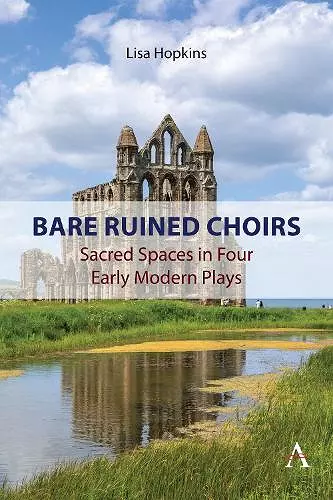Bare Ruined Choirs
Sacred Spaces in Four Early Modern Plays
Format:Paperback
Publisher:Anthem Press
Publishing:1st Jul '25
£20.99
This title is due to be published on 1st July, and will be despatched as soon as possible.

Explores the demarcation of secular and sacred spaces in early modern English drama, analysing four lesser known plays alongside Shakespeare and Marlowe to examine significant historical and geographical sites.
The book discusses the demarcation of secular and sacred territory in early modern English drama. It focuses primarily on four plays, Thorney Abbey, A Knack to Know a Knave, A Shoemaker a Gentleman and The Lovesick King, but puts these in dialogue with Hamlet, Macbeth, King Lear and Doctor Faustus.
The book argues that these plays show us a society haunted by the unquiet burials of Anglo-Saxon saints and kings and the destruction of shrines and churches during the English Reformation, and peopled by crossover figures who inhabit both the spiritual and the secular realms. It begins with an introduction which sets out the distinction between spiritual and temporal overlordship of lands, glances at the ways in which sacred and secular spheres of influence could be brought into conflict in plays from the late-sixteenth and early seventeenth centuries, and explains that the book is interested not only in the extent to which those spheres of influence map onto actual territory but also in the ways in which land is perceived as retaining memories of uses to which it has been previously put. This was particularly the case when royal or saintly bodies had been buried in it, even if the actual burials had been disturbed or lost completely, but other kinds of spaces and places could also carry with them a sense of an ineradicable past (often a specifically pre-Reformation past). When plays claim to represent such richly suggestive sites as holy wells, abbeys built before the Norman Conquest, or places where martyrdoms or miracles have occurred, they simultaneously suggest the power and appeal of such memories and yet also acknowledge their loss and inaccessibility, not least because what the audience sees is not the place represented but bare boards of the stage standing in for it.
Four chapters then follow. The first is on the anonymous Thorney Abbey, which offers an origin story for the Anglo-Saxon foundation which preceded the Norman Westminster Abbey during the reign of an unnamed king of England who has a brother (and heir) called Edmund. The Anglo-Saxon St Edmund was well remembered in the early modern period and was particularly important to English Catholic exiles; the unnamed brother can be identified as Athelstan, grandson of Alfred the Great, who...
ISBN: 9781839995118
Dimensions: 229mm x 153mm x 13mm
Weight: 454g
150 pages